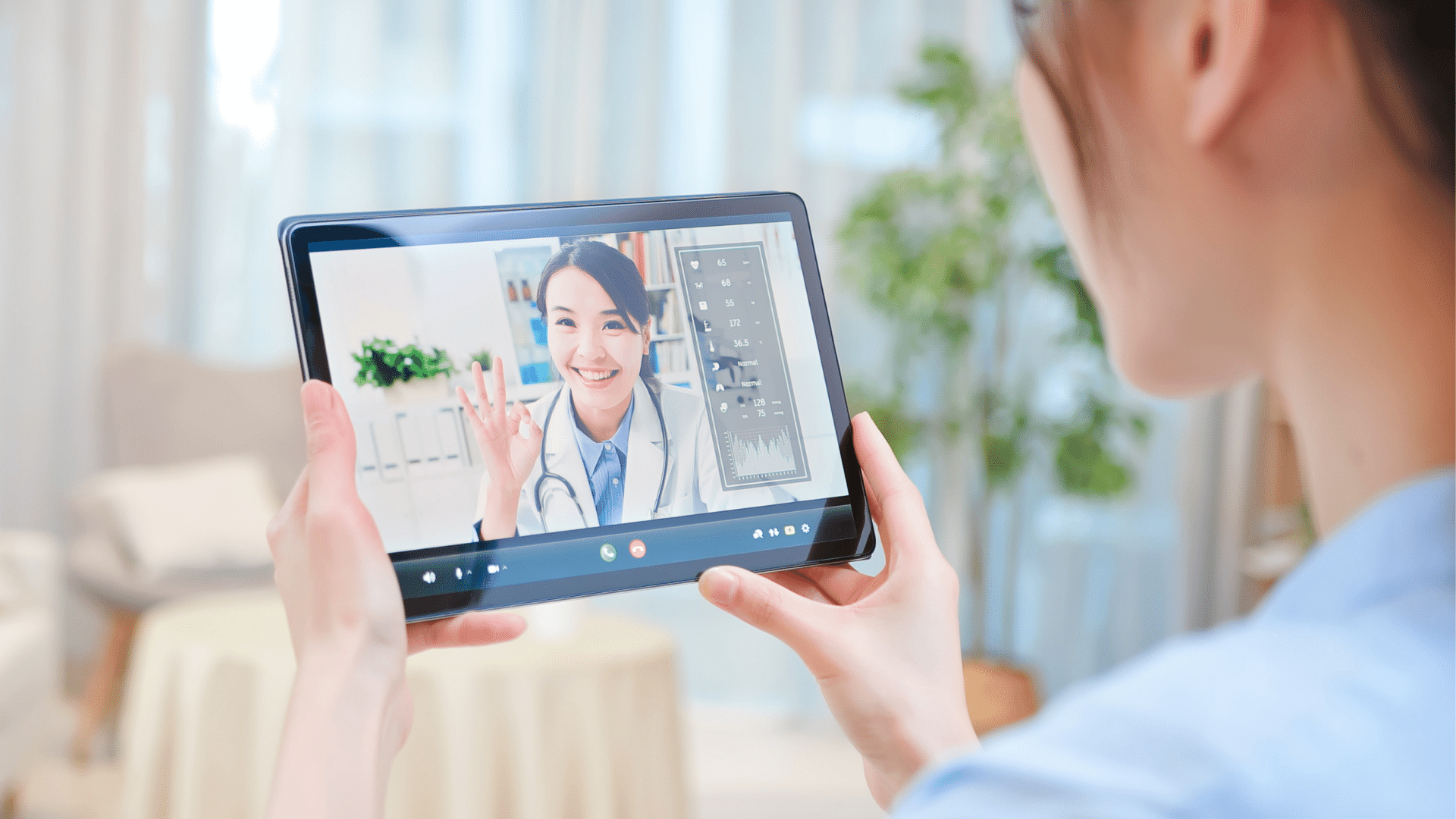While modern telemedicine has been around for over a decade, there can be conflicting definitions of what the practice includes, its benefits, and how patients and providers can access different telemedicine services. Let’s explore the basics of telehealth and how it’s making healthcare more available to everyone.
What is Telehealth?
The National Institute of Health defines telehealth as “the use of communications technologies to provide and support health care at a distance.” At the same time, telehealth is often used to encompass clinical contacts and all health-related contacts, including health-related education that takes place over distance. More plainly, telemedicine allows healthcare professionals and patients to connect through digital means.
Telemedicine Channels
When you picture telehealth, you may have a vision of a provider speaking with a patient over videoconferencing, but that’s only one type of telemedicine. There are generally four defined ways of conducting telemedicine:
Live Video Conferencing (Synchronous)
This type of telemedicine involves a real-time discussion between clinicians and patients. Typically, using two-way live video conferencing where patients can see, hear, and interact with clinicians. This form of telehealth is sometimes referred to as synchronous telehealth because of the real-time experience patients, and clinicians have when using this technology. Live video conferencing has many advantages, notably in bringing healthcare to rural communities. Plus, the relatively short time required for a patient to see their doctor can even help alleviate patients’ non-compliance with follow-up visits by meeting them where they are instead of having them come to physicians directly. To access live video conferencing telemedicine, patients will need a device capable of connecting to the internet, such as a tablet or smartphone, while providers will need software that gives them secure, HIPAA-compliant access to talk with their patients.
Store and Forward (Asynchronous)
While live video conferencing involves real-time communication between parties, store and forward or asynchronous telemedicine describes the one-way transmission of medical or health information, such as an x-ray, lab result, or prescription, from one provider to another for consultation or interpretation. The parties don’t communicate in real-time but respond after examining medical information, making for much more flexible communication. This telemedicine type can commonly be used when time or distance can play a significant factor in a consultation or diagnosis. For example, rural patients may not have the time or ability to travel the distance to a specialist provider. Still, their primary care physician may be able to utilize the store and forward to get a second opinion while maintaining control over the patient’s care and coordination. Providers can also see caseload benefits from store and forward vs. live video conferencing. For example, a provider with a spare hour might be able to see four or five live cases. However, asynchronous telemedicine may allow providers to increase that case count to 15 or 20.
Remote Patient Monitoring
Remote patient monitoring (RPM) involves collecting, transmitting, evaluating, and communicating individual health data from a patient to the healthcare provider from a location outside a hospital or clinical office. Typically personal health technology, such as a wireless device, wearable sensor, implanted health monitor, or smartphone, is used to capture and share data. Remote patient monitoring is primarily used for ongoing patient monitoring and chronic disease management and can use real-time or delayed reporting to the provider based on the patient’s needs. For example, a patient in senior living may utilize a wearable cardiac monitor after complaining of tachycardia that was unreproducible at their provider. Remote patient monitoring provides an easy-to-read 24-72 hour review of the patient’s cardiac health.
Mobile Health
Commonly used to describe the practice of providing health services via a mobile device, mobile health is an evolving area where digital applications on smartphones can support patients between provider visits. Patients can receive information digitally from their provider in an easy-to-access format and gain the capability to input information immediately and send it to their provider. For example, a patient might open their app and document their symptoms as they happen instead of recounting them at their next office visit. At the same time, providers benefit equally from the decreased communication barriers with their patients. For example, offices can utilize push notifications to ask patients to survey whether their health complaints have been resolved with treatment and remind patients to follow their treatment plan from their visit, allowing providers to catch problems before they spiral.
Benefits of Telemedicine
With a broad reach toward patients, telehealth has several tangible benefits. Let’s review the benefits for both patients and providers.
Telemedicine Benefits for Patients
Perhaps the greatest benefit of telehealth is the widespread accessibility paired with treatment in place for patients. Care in place becomes an achievable goal by utilizing telehealth to allow patients to avoid traveling to a pre-arranged point such as the provider’s office to receive care. Instead, patients can conveniently contact their care provider to address or follow up on issues that may arise without coordinating the time and resources to get to the provider in person. The contact can happen quickly as the patient and provider decide that faster access to care than an in-office visit will best serve the patient’s needs. Telehealth allows them to participate in their standard of care and achieve and sustain patient independence when many would not have the ability without a telehealth option to extend their participation beyond the essential interaction many patients struggle to reach.
Telemedicine Benefits for Providers
Providers can see significant benefits from telehealth as well. Expanding access to specialty and lower-cost primary care can allow providers to make timely, accessible care available to their patients in previously impossible ways. Store and forward enables providers to maintain control over a patient’s health plan by collaborating with specialists without needing the patient to make time for additional office visits. Mobile health applications providing personalized contact, such as reminding patients to take their medication and remote patient monitoring for patients during a care transition period, allow providers to catch issues before they are exacerbated and require a new or return trip to the emergency department. Telehealth spans the breadth of the provider-patient relationship, ensuring that each patient can receive the care they need and the personal connection they want while ensuring that providers gain maximum visibility into patient processes.
New Frontiers in Telehealth: Dispatch-Integrated Telemedicine
Telehealth continues to evolve in its application and design. One of the new frontiers in telehealth is having telemedicine capabilities directly integrated at the point of dispatch. In this model, low-acuity patients who call 9-1-1 are connected with telehealth services which unlock additional benefits beyond the “traditional” scope of telemedicine. Click here to learn more about how dispatch-integrated telemedicine can benefit your agency.





